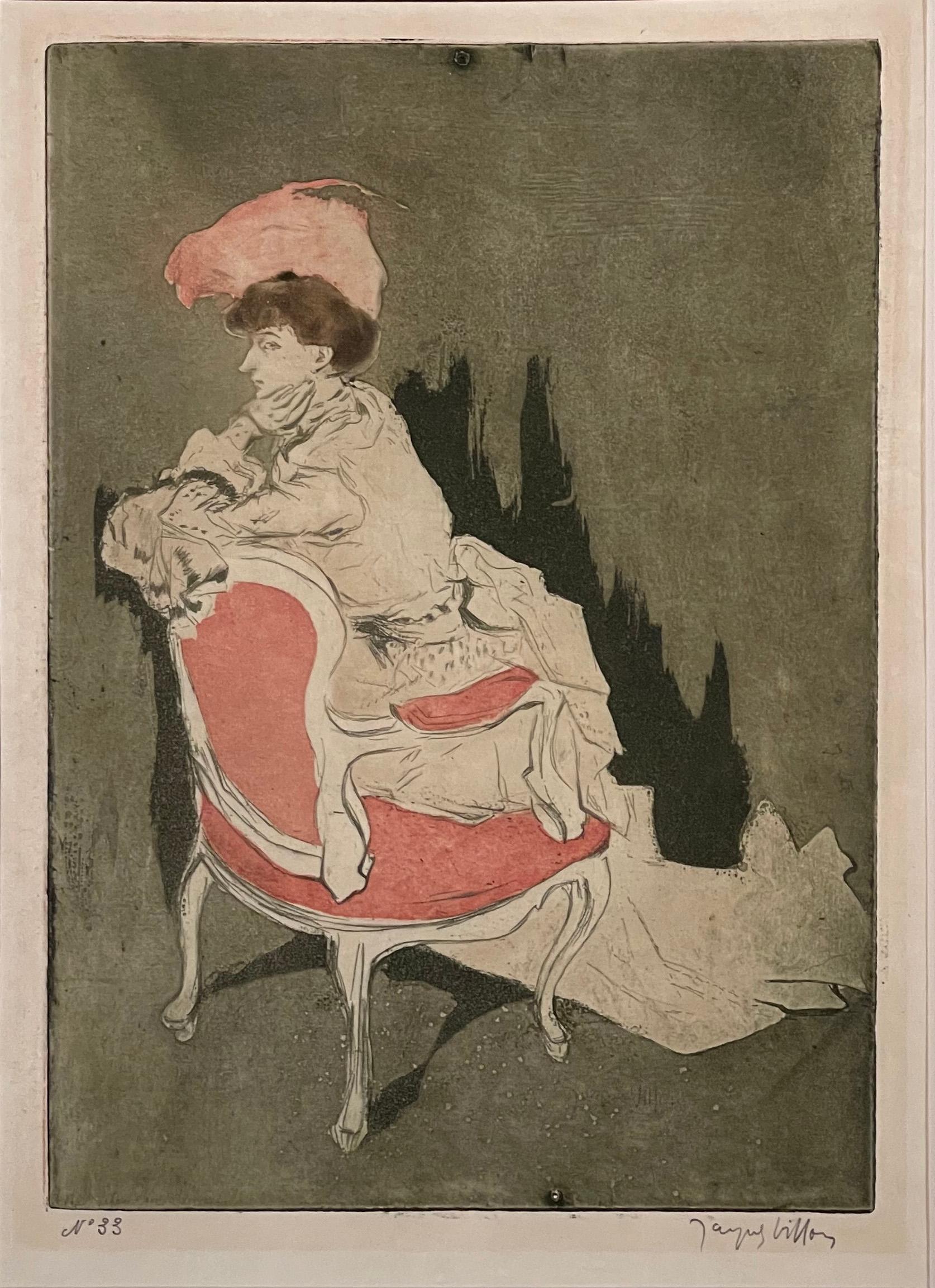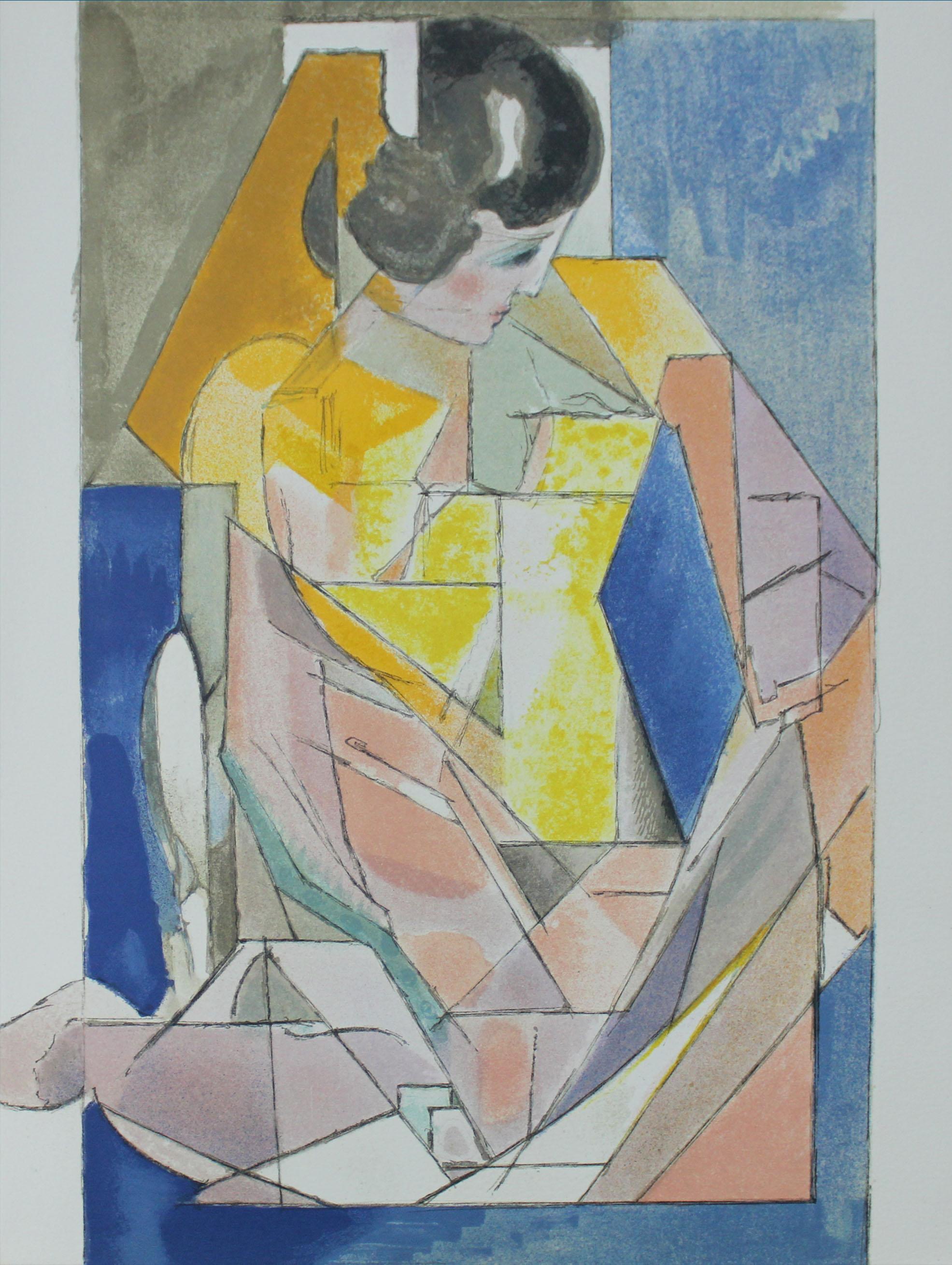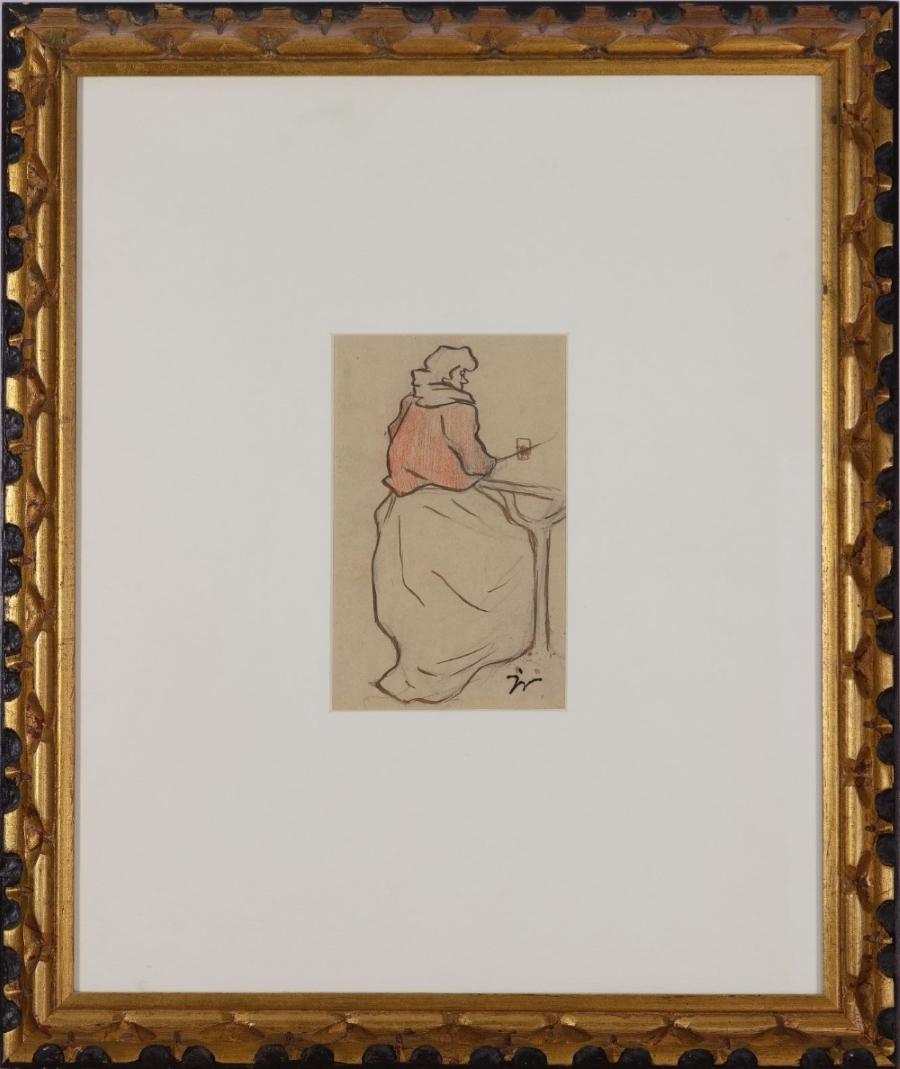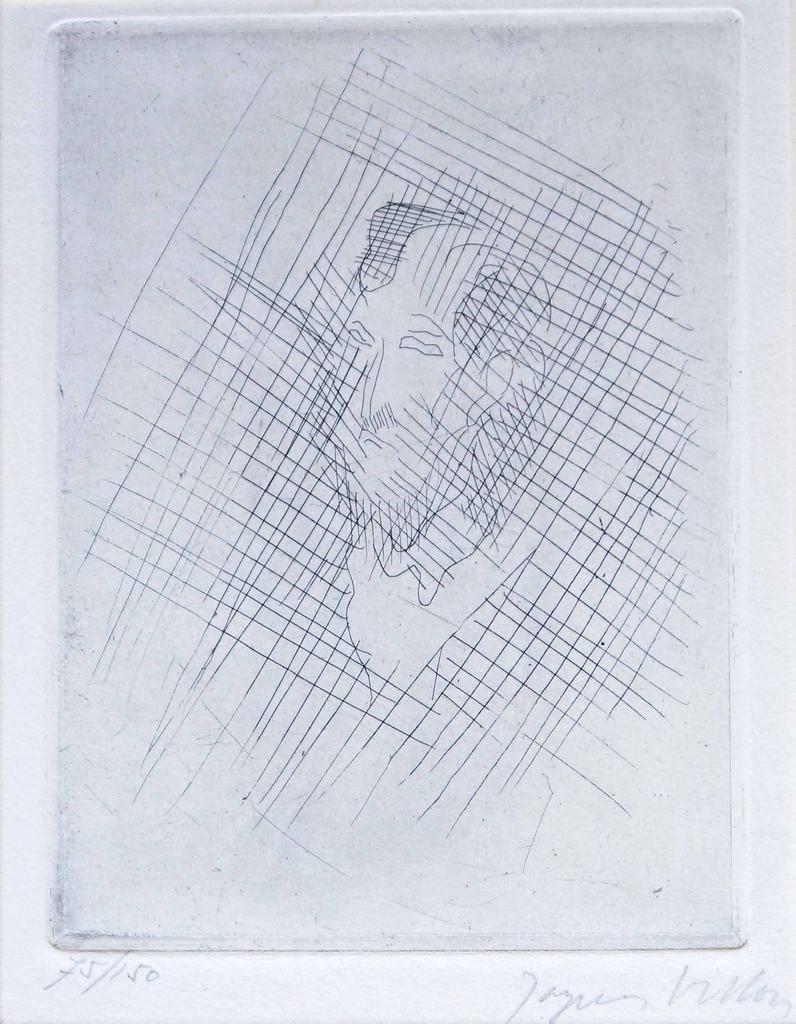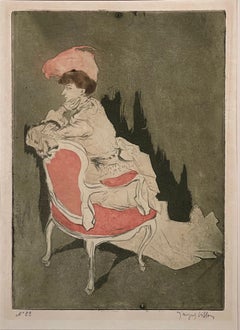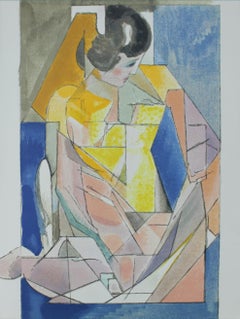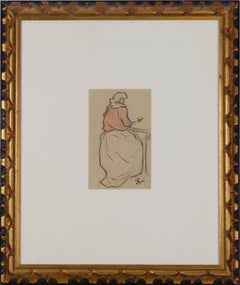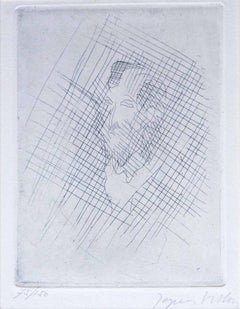Items Similar to La Couseuse (The Seamstress)
Want more images or videos?
Request additional images or videos from the seller
1 of 2
Jacques VillonLa Couseuse (The Seamstress)1905
1905
$3,500
£2,712.76
€3,071.50
CA$5,009.96
A$5,462.89
CHF 2,839.33
MX$65,398.12
NOK 36,014.16
SEK 33,734
DKK 22,940.11
About the Item
Jacques Villon (1875-1963), La Couseuse (The Seamstress), drypoint, 1905, signed in pencil lower right margin. Reference: Ginestet and Pouillon 147, Auberty and Perussaux 96. On a heavy cream laid paper with a partial initials watermark. In good condition apart from slight time stain; soft fold along a laid paper line, a few marks in margins. Archival mounting. With margins, 6 3/8 x 6 3/8, the sheet 8 1/2 x 11 1/4 inches.
A fine, black atmospheric impression, with the drypoint burr fresh and satiny.
This is an exceedingly rare impression. When Ginestet and Poullon did their recent catalogue raisonne of Villon’s prints they were unable to locate an impression, and so made a photo of the impression shown in the very early Auberty and Perussaux catalogue. This impression is before any burnishing of the plate (if indeed it was burnished), so the platemarks are quite prominent. It was never editioned and exists in at most a few impressions.
In this relatively early period in Villon’s career as a printmaker, he made a number of color aquatints, and also began a series of very personal drypoints of his (and his sister Suzanne and his brother Marcel Duchamp’s) family as well as those of children (including the famed Minne series). This extraordinarily successful portrait appears to be within the latter tradition.
- Creator:Jacques Villon (1875-1963, French)
- Creation Year:1905
- Medium:
- Movement & Style:
- Period:
- Condition:
- Gallery Location:New York, NY
- Reference Number:1stDibs: LU51531465283
Jacques Villon
Jacques Villon was born Gaston Duchamp in 1875. He was the oldest brother of the artists Marcel Duchamp, Suzanne Duchamp-Crotti and the sculptor Raymond Duchamp-Villon. Initially a law student, in 1894 he went to Paris to study art. It was there that he met Henri Toulouse-Lautrec and other influential artists in Paris, and changed his name to Jacques Villon, after the poet. Villon made prints of some of the most well-known belle-époque portraits and genre scenes of the early twentieth century. Around 1911, he came under the influence of Picasso and other cubists, and became a leading exponent of the style, exhibiting in the 1913 Armory Show in New York. In 1922, the Galerie Bernheim-Jeune commissioned Villon to produce a series of color aquatints after 38 major nineteenth- and twentieth-century paintings. This series included works by Pierre Auguste Renoir, Henri Matisse, Pablo Picasso, Paul Cezanne, Georges Braque, Raoul Dufy, Amadeo Modigliani, Edouard Manet, Pierre Bonnard, and others. Artists who were alive at the time of the printing collaborated with Villon, and signed the prints. The project took ten years to complete. Several of these prints are valued highly today, and some went on to be reproduced by the Louvre Museum as photo-etchings. Villon's 'cubist' etchings, with their characteristic cross-hatching, are amongst the most renowned prints of the twentieth century. Jacques Villon's long career brought him fame. The diverse nature of his paintings, from end-of-the-century portraits to cubist and abstract styles to graphic works, made him a major figure in twentieth-century art. He was made a Grand Officer of the Légion d'Honneur, and upon his death in 1963, and he was given a state funeral.
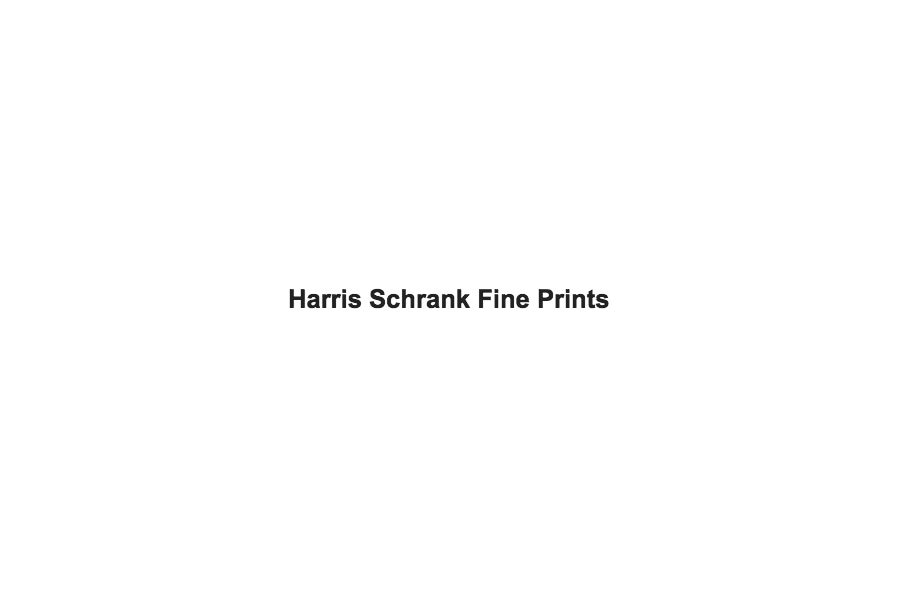
About the Seller
4.9
Recognized Seller
These prestigious sellers are industry leaders and represent the highest echelon for item quality and design.
Established in 2000
1stDibs seller since 2016
107 sales on 1stDibs
Typical response time: 6 hours
Associations
International Fine Print Dealers Association
- ShippingRetrieving quote...Shipping from: New York, NY
- Return Policy
More From This Seller
View AllLa Parisienne, (tournee a gauche, petite planche)
By Jacques Villon
Located in New York, NY
Jacques Villon (1875-1963), La Parisienne, (tournee a gauche, petite planche), 1904, etching, roulette and aquatint, signed in pencil [also signed in pla...
Category
Early 1900s Impressionist Figurative Prints
Materials
Etching, Aquatint
La Parisienne (tournee a gauche, petite planche)
By Jacques Villon
Located in New York, NY
Jacques Villon (1875-1963), La Parisienne (tournee a gauche, petite planche), 1904, etching and aquatint in color (black, brown, red), signed and dated...
Category
Early 1900s Impressionist Figurative Prints
Materials
Etching, Aquatint
Minne Playing with a Cat (Minne Jouant avec un Chat)
By Jacques Villon
Located in New York, NY
Jacques Villon (1875-1963) etching, aquatint, and drypoint, Minne Playing with a Cat (Minne Jouant avec un Chat),1907, signed in pencil and numbered (12/30)(Ginestet and Pouillon 192...
Category
Early 1900s Impressionist Figurative Prints
Materials
Drypoint, Etching, Aquatint
Adresse Sagot - Two States, Before and After Lettering
By Jacques Villon
Located in New York, NY
Jacques Villon (1875-1963), two drypoints, 1905, (Ginestet and Pouillion E156) each signed in pencil: an impression of the final state (third state of three) printed in bistre, with ...
Category
Early 1900s Impressionist Portrait Prints
Materials
Drypoint
Pour le Bapteme de Madeleine
By Jacques Villon
Located in New York, NY
Jacques Villon (1875-1963), Pour le Bapteme de Madeleine, 1900, aquatint , etching, printed in soft blue ink, signed in pencil lower right and numbered 7/10. On laid paper. Reference...
Category
Early 1900s Impressionist Figurative Prints
Materials
Etching, Aquatint
Jeune Fille de Rosporden
By Emile-Alfred Dezaunay
Located in New York, NY
Emile-Alfred Dezaunay (1854-1938)
Jeune Fille de Rosporden, c. 1890
etching and aquatint printed in color on cream-colored laid ARCHES paper; Referen...
Category
1890s Impressionist Portrait Prints
Materials
Etching, Aquatint
You May Also Like
LA PARISIENNE
By Jacques Villon
Located in Portland, ME
Villon, Jacques (1875-1963). LA PARISIENNE (TOURNEE A GAUCHE, PETITE PLANCHE). G PE93. Etching and aquatint in colors, 1904. Edition of 100 Printed on cr...
Category
Early 1900s Figurative Prints
Materials
Etching, Aquatint
'Portrait d'une Jeune Fille' From Souvenirs de Portraits d'Artistes
By Jacques Villon
Located in Philadelphia, PA
Jacques Villon
Portrait d'une Jeune Fille
Original lithograph in colors on paper
Mourlout
Souvenirs de Portraits d'Artistes
1972
Category
1970s Prints and Multiples
Materials
Lithograph
Femme Attablee Devant un Verre de Vin
By Jacques Villon
Located in Milwaukee, WI
Signed with estate stamp, J.V. double sided.
6-3/4" x 4-3/4" art
18" x 15-1/4" frame
Jacques Villon (French, 1875 - 1963) French painter, printmaker and illustrator. The oldest of three brothers who became major 20th-century artists, including Raymond Duchamp-Villon and Marcel Duchamp, he learnt engraving at the age of 16 from his maternal grandfather, Emile-Frédéric Nicolle (1830-94), a ship-broker who was also a much appreciated amateur artist. In January 1894, having completed his studies at the Lycée Corneille in Rouen, he was sent to study at the Faculty of Law of the University of Paris, but within a year he was devoting most of his time to art, already contributing lithographs to Parisian illustrated newspapers such as Assiette au beurre. At this time he chose his pseudonym: Jack (subsequently Jacques) in homage to Alphonse Daudet’s novel Jack (1876) and Villon in appreciation of the 15th-century French poet François Villon...
Category
Early 20th Century Figurative Drawings and Watercolors
Materials
Crayon, India Ink, Pencil
Figure
By Jacques Villon
Located in Roma, IT
Hand signed and numbered. Edition of 150 prints.
Image dimensions: 15 x 11 cm
Category
1970s Post-Impressionist Portrait Prints
Materials
Etching
LE POTIN
By Jacques Villon
Located in Portland, ME
Villon, Jacques (French, 1875-1963) LE POTIN (GP E96) Drypoint and aquatint printed in green, 1904, Edition of 50. Printed on Arches paper, signed and numbered 32 in pencil. Publishe...
Category
Early 1900s Figurative Prints
Materials
Drypoint, Aquatint
Vielle Femme en Petite Cape
By Jacques Villon
Located in Milwaukee, WI
Signed with stamp, J.V.
7-5/8" x 4-3/4" art
19" x 15-1/4" frame
Jacques Villon (French, 1875 - 1963) French painter, printmaker and illustrator. The oldest of three brothers who became major 20th-century artists, including Raymond Duchamp-Villon and Marcel Duchamp, he learnt engraving at the age of 16 from his maternal grandfather, Emile-Frédéric Nicolle (1830-94), a ship-broker who was also a much appreciated amateur artist. In January 1894, having completed his studies at the Lycée Corneille in Rouen, he was sent to study at the Faculty of Law of the University of Paris, but within a year he was devoting most of his time to art, already contributing lithographs to Parisian illustrated newspapers such as Assiette au beurre. At this time he chose his pseudonym: Jack (subsequently Jacques) in homage to Alphonse Daudet’s novel Jack (1876) and Villon in appreciation of the 15th-century French poet François Villon...
Category
Early 1900s Impressionist Figurative Paintings
Materials
India Ink, Gouache
More Ways To Browse
Ruth Smith
Toulouse Lautrec Hand Signed
Vintage Breastfeeding Art
Warhol Cowboys And Indians
Warhol Queen Elizabeth
Warhol Shadow
Will Barnet Reflections
Alex Katz Black Hat
Andy Warhol Coa
Andy Warhol Eyes
Andy Warhol Judy Garland
Andy Warhol Muhammad Ali
Annie Leibovitz Patti Smith
Banksy Note
Dali Tarot Signed
Edgar Holloway
Henri Matisse Visages
Jacques De Bascher
